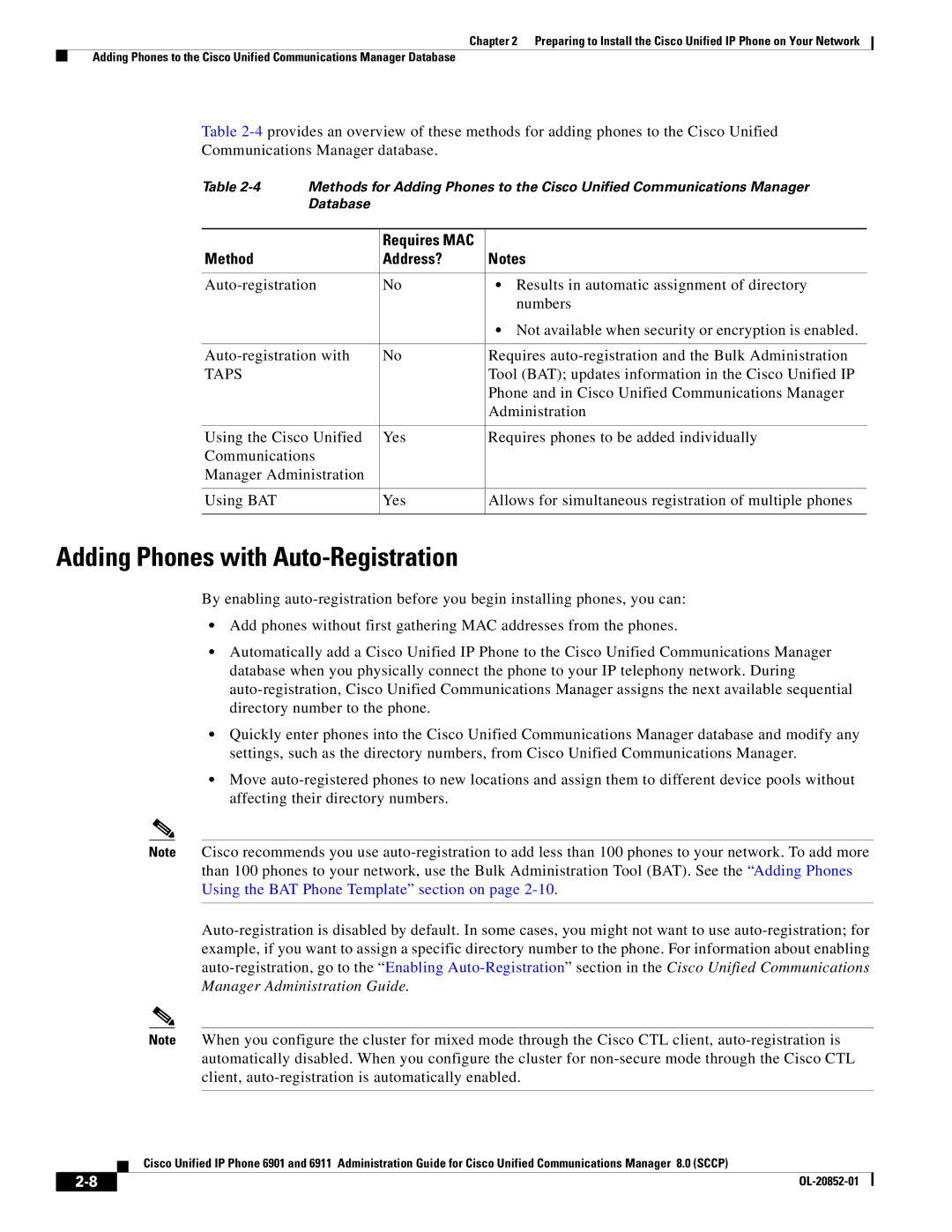
Chapter 2 Preparing to Install the Cisco Unified IP Phone on Your Network
Adding Phones to the Cisco Unified Communications Manager Database
Table
Communications Manager database.
Table | Methods for Adding Phones to the Cisco Unified Communications Manager | ||
| Database |
|
|
|
|
|
|
|
| Requires MAC |
|
Method |
| Address? | Notes |
|
|
| |
No | • Results in automatic assignment of directory | ||
|
|
| numbers |
|
|
| • Not available when security or encryption is enabled. |
|
|
| |
No | Requires | ||
TAPS |
|
| Tool (BAT); updates information in the Cisco Unified IP |
|
|
| Phone and in Cisco Unified Communications Manager |
|
|
| Administration |
|
|
| |
Using the Cisco Unified | Yes | Requires phones to be added individually | |
Communications |
|
| |
Manager Administration |
|
| |
|
|
|
|
Using BAT |
| Yes | Allows for simultaneous registration of multiple phones |
|
|
|
|
Adding Phones with Auto-Registration
By enabling
•Add phones without first gathering MAC addresses from the phones.
•Automatically add a Cisco Unified IP Phone to the Cisco Unified Communications Manager database when you physically connect the phone to your IP telephony network. During
•Quickly enter phones into the Cisco Unified Communications Manager database and modify any settings, such as the directory numbers, from Cisco Unified Communications Manager.
•Move
Note Cisco recommends you use
Note When you configure the cluster for mixed mode through the Cisco CTL client,
Cisco Unified IP Phone 6901 and 6911 Administration Guide for Cisco Unified Communications Manager 8.0 (SCCP)
| ||
|
